Breastfeeding: Learning outcomes
‹ BACK TO INTRODUCTION
After completing this tutorial, you will be able to:
- Describe the advantages of breastfeeding.
- Outline the factors that affect whether a medicine is compatible with breastfeeding.
- Give practical advice to minimise risks associated with the use of medicines in breastfeeding mothers, and know where to look for information.
You can download a PDF of this whole tutorial (without interactive elements such as Learning exercises) and a one-page summary of key points. one-page summary of key points.
 You should allow 60 minutes to complete this tutorial, including Learning exercises.
You should allow 60 minutes to complete this tutorial, including Learning exercises.Competencies
If you are a hospital trainee pharmacist, this tutorial may help you achieve GPhC learning outcomes such as these:- LO 2 Work in partnership with people to support and empower them in shared decision-making about their health and well-being
- LO 5 Proactively support people to make safe and effective use of their medicines and devices
- LO 12 Take an all-inclusive approach to ensure the most appropriate course of action based on clinical, legal and professional considerations
- LO 16 Apply professional judgement in all circumstances, taking legal and ethical reasoning into account
- LO 29 Apply the principles of clinical therapeutics, pharmacology and genomics to make effective use of medicines for people
- LO 30 Appraise the evidence base and apply clinical reasoning and professional judgement to make safe and logical decisions which minimise risk and optimise outcomes for the person
If you are a foundation pharmacist, this tutorial may assist with meeting certain competencies from the RPS framework including:
- 1.1 Applies evidence-based clinical knowledge to make suitable recommendations or take appropriate actions
- 1.6 Uses own pharmaceutical knowledge to positively impact the usage and stewardship of medicines at an individual and population level.
- 1.7 Undertakes a holistic clinical review of a person’s medicines to ensure they are appropriate.
- 2.1 Keeps the individual at the centre of their approach to care at all times.
- 3.1 Draws upon own knowledge and up-to-date guidance to effectively make decisions appropriately and with confidence.
- 3.2 Critically appraises appropriate information to make a decision in an efficient and systematic manner; adopts evidence-informed solutions.
- 3.3 Demonstrate awareness of where to seek appropriate information to solve problems and make decisions.
- 3.5 Manages uncertainty and possible risk appropriately, while ensuring high attention to detail is maintained when making decisions regarding the individual receiving care.
- 6.5 Uses effective questioning when working with individuals receiving care or other healthcare professionals.
Continuing professional development
Finally, here are some CPD activities you could consider:
 ★ Ask your Medicines Information pharmacist if you can complete a clinical enquiry about the use of medicines in a breastfeeding mother. Can you comment on the quality of evidence that you used to make decisions in this situation? How did it compare to the quality of evidence underpinning, say, the licensed indication for a medicine?
★ Ask your Medicines Information pharmacist if you can complete a clinical enquiry about the use of medicines in a breastfeeding mother. Can you comment on the quality of evidence that you used to make decisions in this situation? How did it compare to the quality of evidence underpinning, say, the licensed indication for a medicine?★ Accompany your women’s health pharmacist on their postnatal ward. What medicines are being used in practice by mothers who are breastfeeding their newborn infants? What do your information sources say about the compatibility of these medicines with breastfeeding? Ask about the breastfeeding support services available to women in your area: where can they go if they are having problems?







